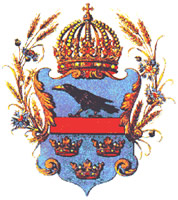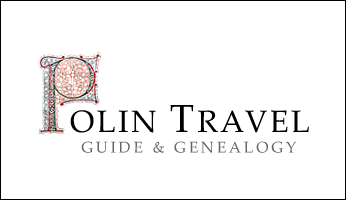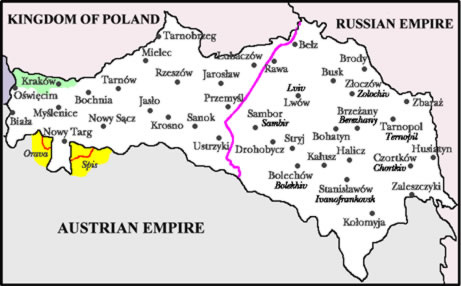
Galicia, as an administrative and geographical term is usually connected with the period of partition of Poland and brings to mind the territories of Podole and Wolyn taken by Austria in 1772. Nevertheless the political history of this land, called formerly Red Russia dates back to XII century. The name itself according to one of the theories may derive from the period of migration of peoples. The names Galics in the British Isles, Gallatia in the Balcans, Gallia or Gaul in France, Galicia in Spain and Galicja in Poland and todays Ukraine are testimonies of the route taken by the Goidels or Gaidheil tribes, in their migration into Europe from a place somewhere in Asia Minor. According to another theory the name Galicia (ukr. Halychyna) derives from Halicz (ukr. Halych), town which in 1140 became the seat of the first prince of Galicia, called Vladimir. The Name Halicz itself derives from Ukrainian word "halka" meaning "crow" in English. That is why there is a crow on the coat of arms of this land. At the turn of the XII and XIII century the territories of Galicia were possessed by Polish, Hungarian and Volynian princes and in 1223 they faced the first Tartar and Mongolian invasion. The period of the greatest glory for the duchy of Galicia started when prince Daniel, the descendant of Volynian princes took his office in 1238. Daniel fought off the Tartar invasions, managed to break the Polish - Hungarian alliance and captured Kiev. In 1250 prince Daniel in memory of his son Lew founded a new city of Lviv, which soon became a capital. Three years later Daniel was crowned by Papal Delegate, however already in 1264 he died and Galicia fell into decline.
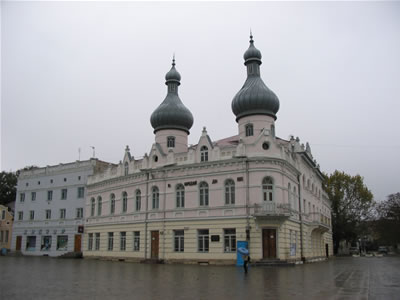
In 1349 Polish king Kazimierz the Great, seated in Cracow, seized the Red Russia and a part of Wolyn and in this way he enlarged the boundaries of Poland for the Galicia territory. This land remained under Polish King's rule up until 1772. In 1648 Bogdan Chmielnicki became the leader of Cossack/Kozak uprising against Polish authorities. This revolt was responsible for numerous pogroms of Polish Jews . Long term civil war devastated Galicia, leading whole region to an economic stagnation. On the 5th of August 1772 Austria seized the eastern Galicia, taking part in the partition of Poland with Prussia and Russia. Next partitions and the gradual limitations of Galicean autonomy led in 1795 to the Austrian capture of v. During Austrian times, Galicia extended from the Biala River (minor tributary of the Vistula) in the west to the Zbrucz/Zbruch, (tributary of the Dniester in the east). From the Carpathians in the south, to the land drops off to the north, passing over the Sarmatian Plain. At its largest during Austrian period, Galicia comprised approximately 78,000 square kilometers. Two main cities Cracow and Lviv soon became very resilient academic and political centers of partitioned Poland. Under the rule of emperor Franz Josef broad autonomy was granted to Galicia due to the political shrewdness and common sense of Polish intelligentsia.
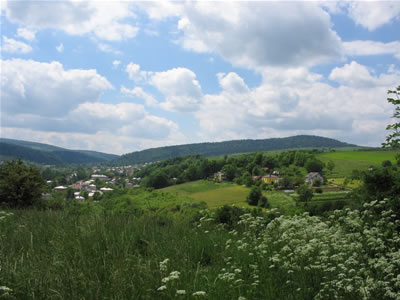
The peace treaty of Versailles after World War I brought liberation for the nations of Central Europe, dominated before by Russia, Prussia and Austria. On November 11th, 1918 Poland regained independence after 123 years of enslavement and aimed to rebuild the state in pre-partition borders. This led to a conflict in former Galicia with freshly created Ukrainian nation. After heavy warfare for Lviv and dislocation of Ukrainian army behind the line of Zbrucz river in 1919, Galicia came back as a Polish province again.
During World War II Galician Jews were deported and exterminated by German Nazis mainly in the extermination camp of Belzec.
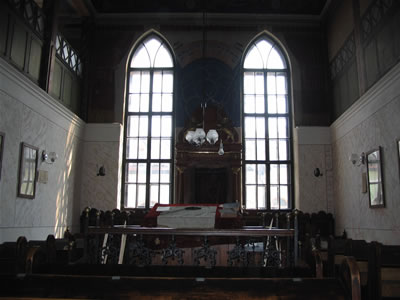
As a result of agreement of Jalta and Potsdam conferences after World War II the borders of Poland were moved westwards, but at the same time Poland lost great part of its eastern territories. These lands were given to the freshly created Soviet Republics. Former, historical Galicia was divided with border between Poland and Ukraine. Galicia lost its nature in result of numerous minorities displacement actions, fratricide fights of Ukrainian nationalists and under an influence of communist Russian regime. This land ceased to be a melting pot where many, different cultures and religions interacted for centuries. In the present times the region of Galicia is rich in numerous historical and cultural sites . Numerous Shtetls, Hasidic Centers Orthodox churches and masterpieces of wooden architecture bring back the memory of this land's Golden Times
